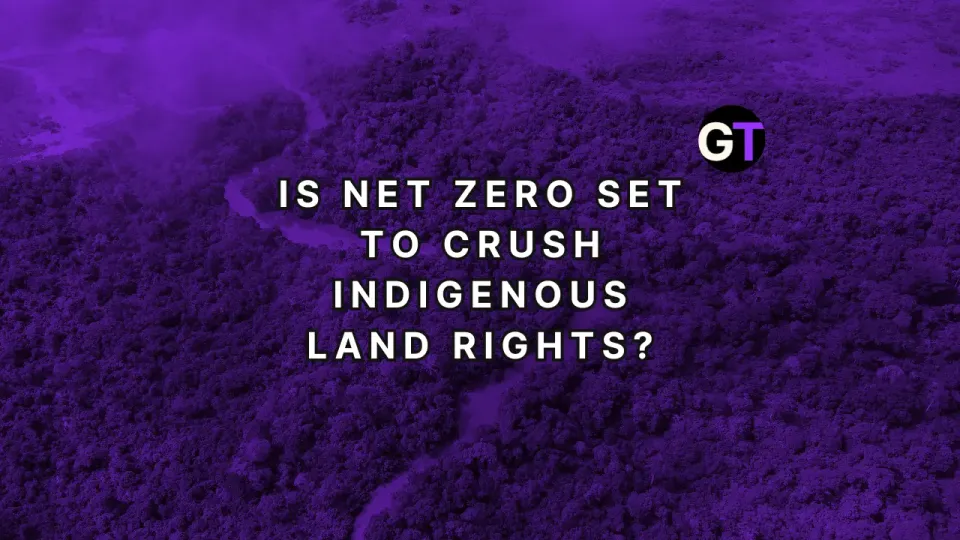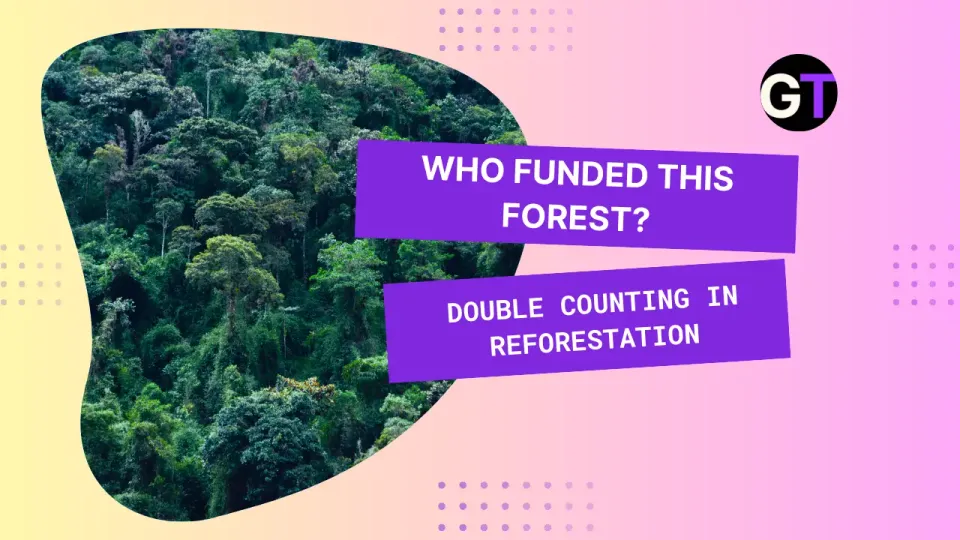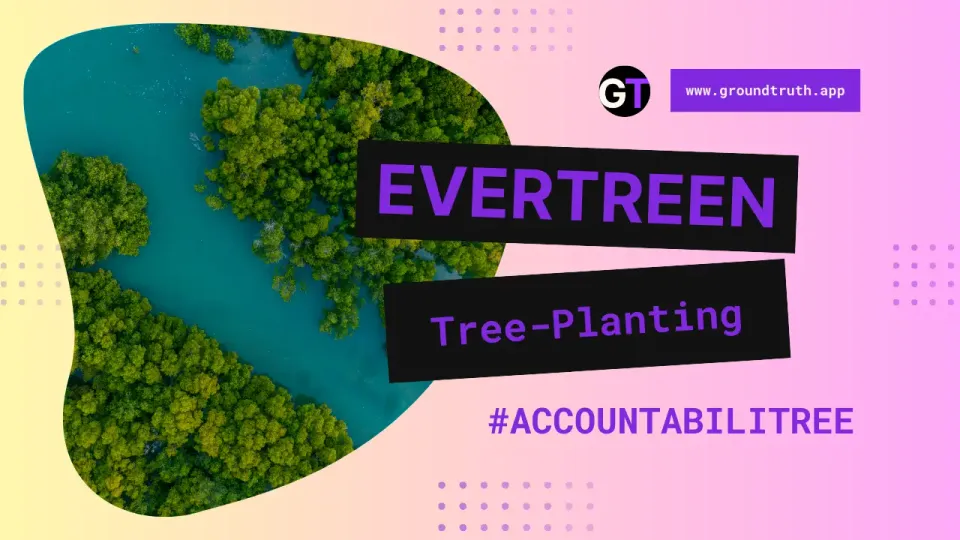Heat Reduces Carbon Sink But Forest Potential Prevails 🌍🔥
...forests have a vital role to play in mitigating climate change - though they cannot do it alone.

Introduction
2023 has seen record-breaking global warming, straining the Earth’s ability to absorb carbon dioxide (CO2) through forests, oceans, and soils. New preliminary findings from a yet-to-be-reviewed study suggested that nature’s ability to absorb carbon has drastically diminished. As these findings have not yet undergone peer review, further validation is needed to confirm their conclusions. However, the initial results naturally lead us to wonder: what does this mean for fighting climate change? Do we write off forests as a solution?
A recent article about this study in The Guardian sparked some debate with its headline, "Trees and land absorbed almost no CO2 last year". While concerns about the ability of forests to sequester carbon are justified, it's important to keep context in mind. Trees still play a vital role in mitigating climate change—though they can’t do it alone.
Why the Decline in Carbon Sinks Matters for All of Us 🌱🌡️
Forests and oceans act like the planet’s lungs, absorbing CO2 from the atmosphere and helping to slow down global warming. When these natural systems can’t keep up, more CO2 stays in the air, making the planet heat up even faster. In 2023, temperatures apparently rose 0.6°C higher than the 1991–2020 average. This is especially concerning after devastating wildfires in Canada and a severe drought in the Amazon.
But why should we care? When carbon sinks, like forests and oceans, underperform, climate change speeds up. This of course means more extreme weather—stronger storms, hotter summers, and unpredictable food supplies. 🌾💧
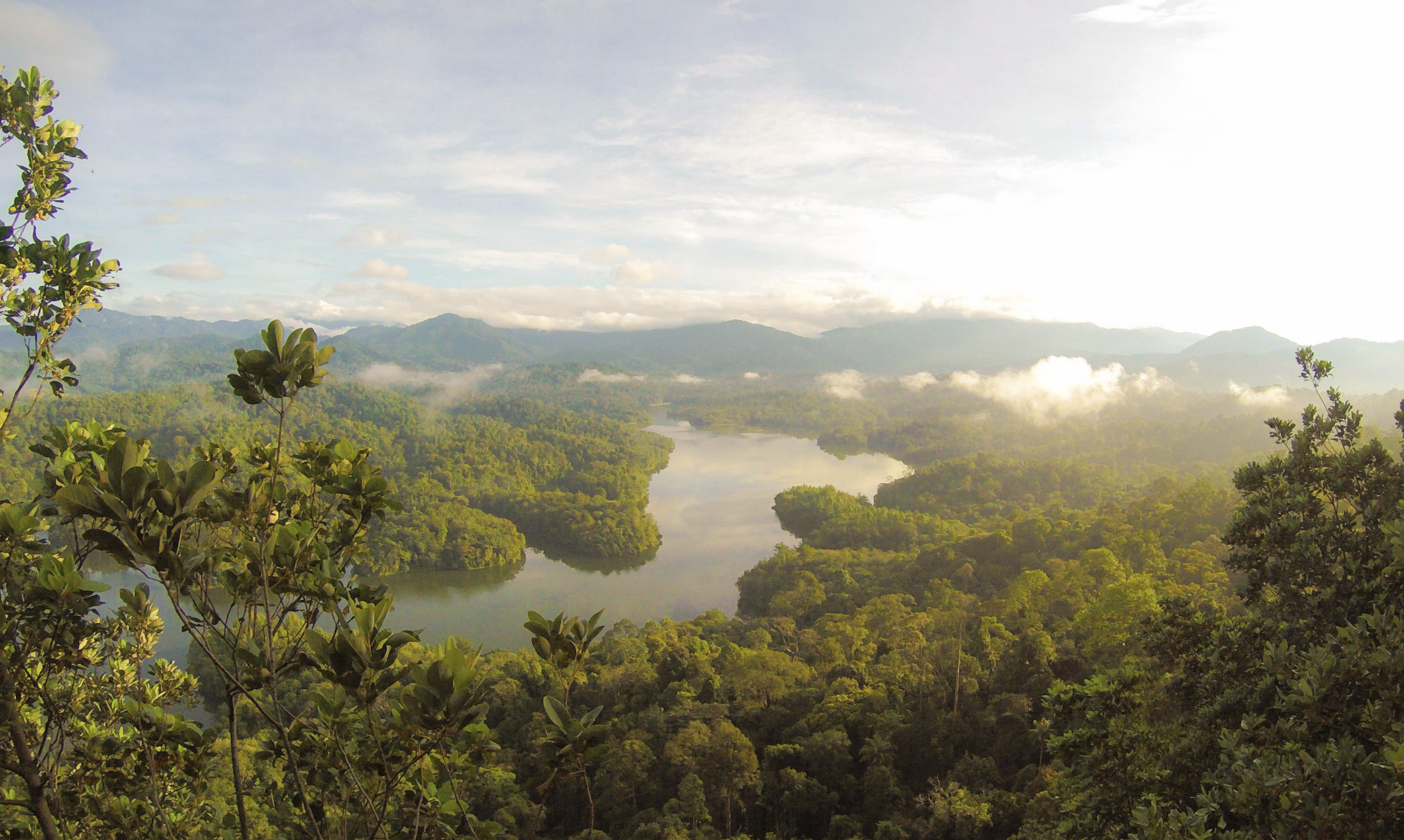
Unprecedented changes in Land and Ocean Carbon Sinks 🌊🌳
In 2023, nature’s carbon sinks—the land and oceans—had their worst year in two decades according to the preliminary findings. Some of the key factors:
- Amazon Drought: The Amazon Rainforest’s ability to absorb carbon dropped by 0.31 gigatonnes (Gt) because of the drought.
- Canadian Wildfires: These fires were some of the worst on record, adding 0.58 Gt of CO2 into the air instead of storing it.
- Tropical Systems: The 2023 El Niño event reversed gains made in previous years, turning tropical areas from carbon sinks into carbon sources. 🌍🔄
While oceans did absorb more carbon than usual, especially in the Pacific, it wasn’t enough to make up for the losses from the land. This means we’re losing one of our strongest natural defenses against climate change.
Forests Still Have Great Potential🌳
Despite these challenges, forests are still a powerful tool in the fight against climate change. "The global tree restoration potential" was published in Nature in 2019. This study estimated that restoring forest cover on 900 million hectares of land could store up to 205 gigatonnes of carbon. A 2023 study by over 200 experts had similar findings regarding the power of trees, though the emphasis was on preserving woodlands. There is a lot of potential carbon sequestration in existing forests, and in potential new ones.
To put that in context - to meet our goals under the Paris Agreement, Carbon Brief estimates that the equivalent of about 123 to 300 gigatonnes of carbon need to be removed from the atmosphere by the end of the century.
That‘s a lot. And as these studies prove, trees can do a lot of the heavy lifting. The authors also highlight the immense potential of global reforestation and afforestation efforts to mitigate climate change, provided emissions reductions are also prioritized.
Further studies in areas like the Pacific Northwest and the Amazon Rainforest have confirmed the ability of forests to act as a carbon sink - including newly planted forests (both of these studies are freely available and use open data - check it out yourself). So before we get too alarmed - yes, forests are still an important instrument of carbon sequestration.
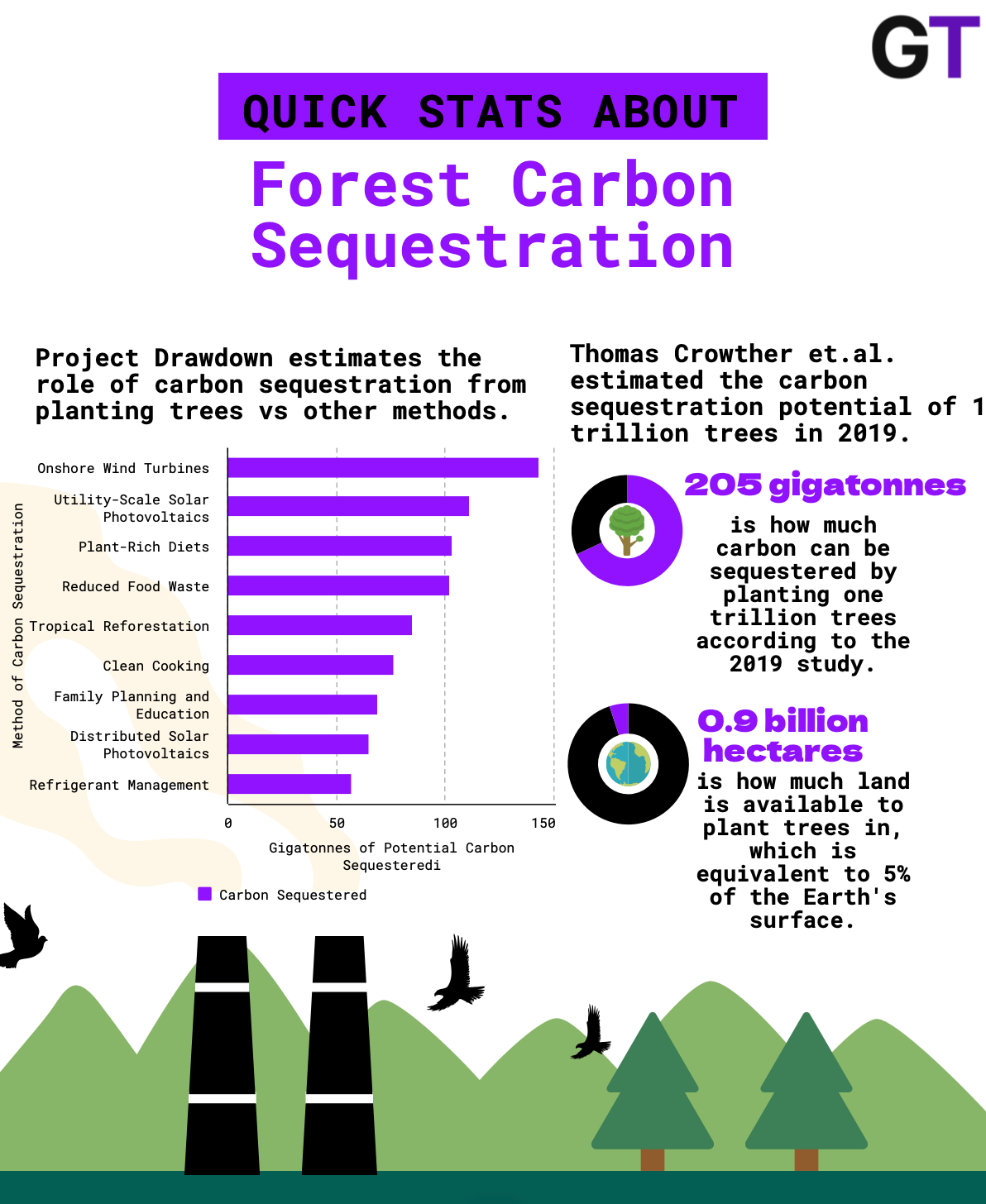
Teamwork Makes the Dream Work🤝
Project Drawdown identifies forest restoration as one of the most impactful solutions to climate change, ranking #5 on their list of top climate change solutions in their most recent assessment under Scenario 2. According to their research, forest restoration has the potential to absorb large amounts of carbon (see illustration above).
The ranking highlights forest restoration as a crucial solution, contributing significantly to global carbon reduction efforts when scaled effectively. Its position within the top five underscores the importance of both maintaining existing forests and restoring degraded ones as vital strategies in combating climate change.
Project Drawdown also ranks refrigerant management as a top climate solution, given the high global warming potential of chemicals like HFCs, followed by onshore wind turbines and solar photovoltaics, which offer clean energy alternatives to fossil fuels. Addressing food waste and promoting plant-rich diets are also high-impact solutions, helping to reduce emissions from agriculture and deforestation.
To effectively combat climate change, it is clear that we must combine multiple strategies—from renewable energy and waste reduction to nature-based solutions—working together for a comprehensive impact. Forests will play a crucial role, but they cannot do it alone, which Crowther himself has acknowledged.
Keeping Track with Science 📊🌱
The study featured in the Guardian emphasizes the importance of real-time monitoring and improved models. By combining data from sources like dynamic vegetation models (which predict how plants absorb carbon over time), satellite fire emission data, and atmospheric carbon tracking, scientists can better understand why and where carbon sinks are struggling. This continuous feedback is essential for adapting climate strategies as conditions change. 🌍✨

Conclusion🌿
In conclusion, while the preliminary findings on the state of global carbon sinks in 2023 are alarming, there’s still hope. Forests, oceans, and soils—though under strain—remain essential in the fight against climate change. They can still store vast amounts of carbon if we act quickly to protect and restore them. This means not only replanting forests and preserving existing ecosystems, but also cutting down emissions to ease the pressure on these natural systems.
No single solution will solve the climate crisis. Putting all of our chips into nature-based offsets is a mistake. Offsets are not a subsitute for actually cutting emissions. But abandoning the methods of conservation and reforestation as a key part of the solution is similarly erroneous.
We need a combination of strategies: reforestation, renewable energy, better land management, and reducing waste. Together, these can help us slow global warming. Ongoing research and monitoring will be key to understanding where and how to act most effectively. With these efforts, we can restore nature’s ability to absorb carbon and work towards a more stable climate.
Open Data and Code📂💡
You can view the open data and code for the study on global forest carbon sequestration potential in 2023 by Crowther et. al. on Zenodo and Github.
We also recommend checking out NASA's Fire Information and Resource Management System
Studies Cited 📚🔍
Bastin, J.-F., Finegold, Y., Garcia, C., Mollicone, D., Rezende, M., Routh, D., Zohner, C. M., & Crowther, T. W.(2019). The global tree restoration potential. Science, 365(6448), 76-79. https://doi.org/10.1126/science.aax0848
Heinrich, V.H.A., Dalagnol, R., Cassol, H.L.G. et al. Large carbon sink potential of secondary forests in the Brazilian Amazon to mitigate climate change. Nat Commun12, 1785 (2021). https://doi.org/10.1038/s41467-021-22050-1
Ke, P., Ciais, P., Sitch, S., Li, W., Bastos, A., Liu, Z., ... & Chevallier, F. (2024). Low latency carbon budget analysis reveals a large decline of the land carbon sink in 2023. arXiv preprint arXiv:2407.12447.
Mo, L., Zohner, C.M., Reich, P.B. et al. Integrated global assessment of the natural forest carbon potential. Nature 624, 92–101 (2023). https://doi.org/10.1038/s41586-023-06723-z
Shanley, C.S., Graves, R.A., Drever, C.R. et al. Mapping forest-based natural climate solutions. Commun Earth Environ 5, 502 (2024). https://doi.org/10.1038/s43247-024-01678-z


